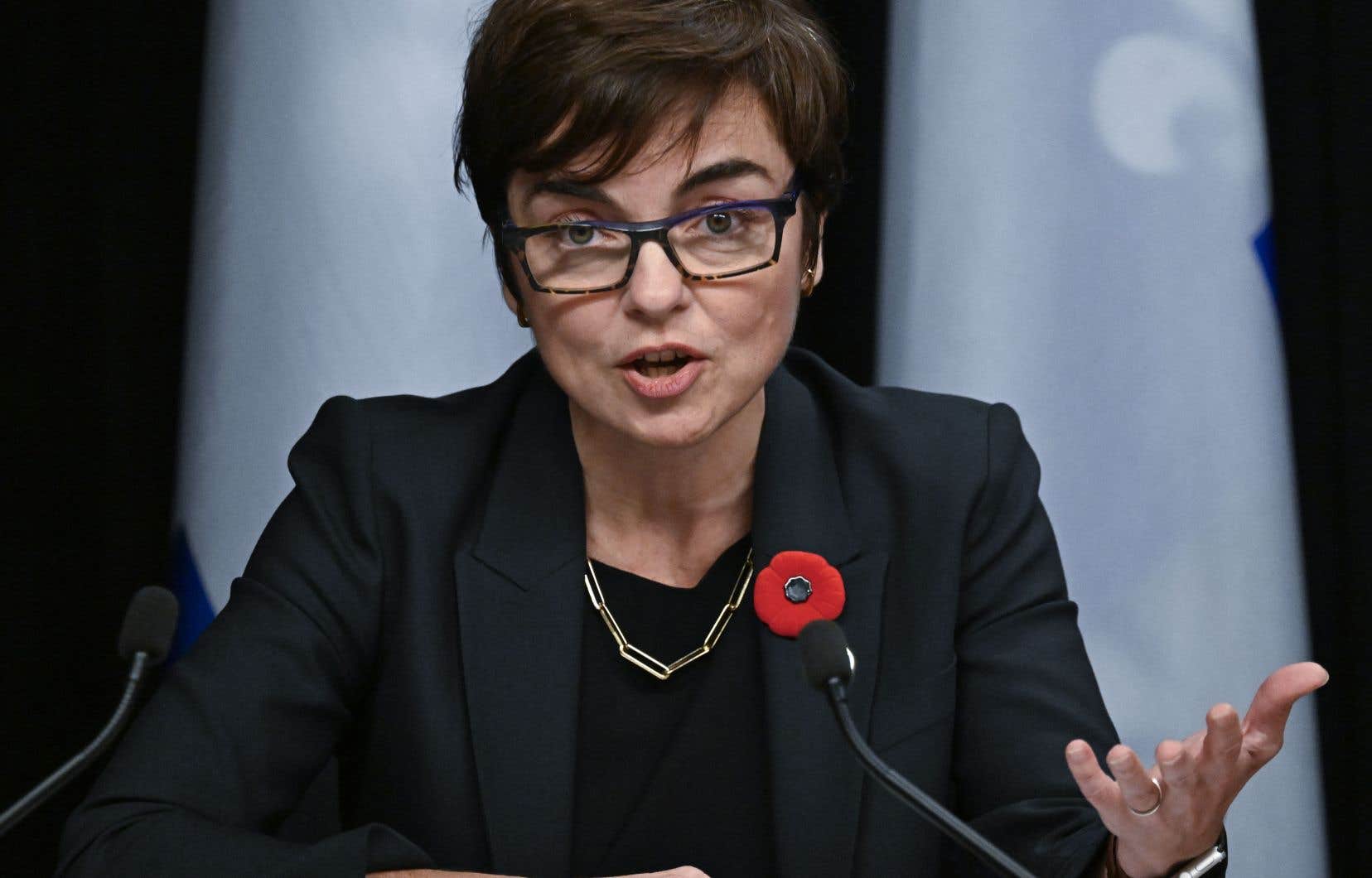Three weeks of consultations on immigration were coming to an end in Quebec on September 27, when Minister Christine Fréchette laid eyes for the first time on a figure that would change everything: 471,000. Statistics Canada’s findings were clear. In twelve months, the number of temporary immigrants to Quebec had exploded. At 322,345 in July 2022, the figure had swelled by 46% to 470,976.
“It told me: well, here, we need to take a break, a step back, look at the situation more globally,” confided the Minister of Immigration in an interview with The duty at the end of a week which saw it publish the reception targets for new permanent arrivals for 2024 and 2025.
Quebec will set its permanent immigration thresholds for the next two years at 50,000 people. To this will be added the “graduates” of the Quebec Experience Program (PEQ) – the government expects 6,500 in 2024 – and a few thousand “business people” who have not yet gone through the immigration process. .
This is a compromise. In the spring, the Minister of Immigration presented two scenarios. One of them provided for the status quo — maintaining annual targets at 50,000. The other, an increase to 60,000 per year, without counting PEQ “graduates”.
This second option made the business community and cities happy. During the consultations held in September on multi-year immigration targets, the City of Montreal and the Conseil du patronat du Québec (CPQ) were among the groups that welcomed the initiative to raise the thresholds. Among those interviewed, “several expressed a preference for the scenario which would gradually increase the targets,” notes the commission’s final report.
The decline of French
Why did you choose a semi-detached option? Prime Minister François Legault gave part of the answer when he announced the new thresholds on Wednesday, flanked by Minister Fréchette and the minister responsible for the French Language, Jean-François Roberge.
The choice of the second guest was not trivial. To justify his targets, Mr. Legault repeatedly mentioned the decline of French. “What is decisive is really the integration of immigrants into the French language,” he said.
In a parliamentary committee in September, the French language commissioner, Benoît Dubreuil, recommended waiting until 85% of immigrants use French “at work and in public spaces” before increasing the thresholds.
Contacted this week, he maintains that the effect of Quebec’s decisions “on the situation of French will depend on the exact composition of immigration, in particular the level of knowledge of French.”
Demographer Marc Termote, for his part, has some reservations about the government’s intentions. “It’s true that immigration, if we don’t move, contributes to the decline of French. Except that this impact is marginal,” points out the expert who teaches in the Department of Demography at the University of Montreal.
He cites a study carried out in 2021 by professors René Houle and Jean-Pierre Corbeil. This indicates that entirely French-speaking immigration “does not [permettrait] to make only marginal progress in the various French indicators by 2036.”
Blaming the decline of French on immigrants, I apologize, that doesn’t work. And to say that we must count on immigrants to reverse the trend is just as false.
“Putting the decline of French on the backs of immigrants, I apologize, that doesn’t work. And to say that we must count on immigrants to reverse the trend is just as false,” summarizes Mr. Termote.
“Strong signal”
Christine Fréchette has her eye on the increase in the number of temporary immigrants. She sees it as a turning point in her thinking. “For me, it was a strong signal where I told myself that we could not ignore it,” underlines the elected official from Sanguinet.
However, at the start of the consultations on immigration, while the opposition parties in the National Assembly criticized her for having obscured the situation of temporary workers, she had claimed that “multi-year planning concerns permanent immigration”.
Informed of the remarks of Mme Fréchette on non-permanent workers, political science professor Mireille Paquet is exasperated. “They didn’t realize that last year. This is nothing new,” she says on the other end of the phone.
The figure may have increased, but “one of the reasons is that the permanent immigration thresholds have not changed”, analyzes the expert and holder of the Research Chair on Immigration Policy at the Concordia University.
Where to house them?
Minister Fréchette maintains that at the current rate, Quebec is endangering its reception capacity. “I toured the regions, and everywhere, I was told: “We need foreign workers, it’s important for our businesses.” But the sentence that follows is: “We no longer know where to house them,” she notes.
According to the CPQ’s vice-president of workforce development policies, Denis Hamel, the notion of reception capacity is “extremely intangible and almost dangerous.” “If we say that in a region, there is not enough housing, there are not enough daycare places, there are not enough doctors, that is true for immigrants and This is true for Quebecers. Does that mean we have to ask people not to move there? ” he asks.
The Legault government has little information on Quebec’s reception capacity, but it launched a call for proposals at the beginning of October for researchers to look into the subject.
Decline of the language, weakened reception capacity, wave of temporary immigrants: Quebec offers several reasons to explain its choice to “maintain” the thresholds. Asked about this this week, François Legault wanted to be clear: the rise in the polls of the Parti Québécois has nothing to do with that. “Absolutely not,” he replied curtly to a journalist. ” No. »
